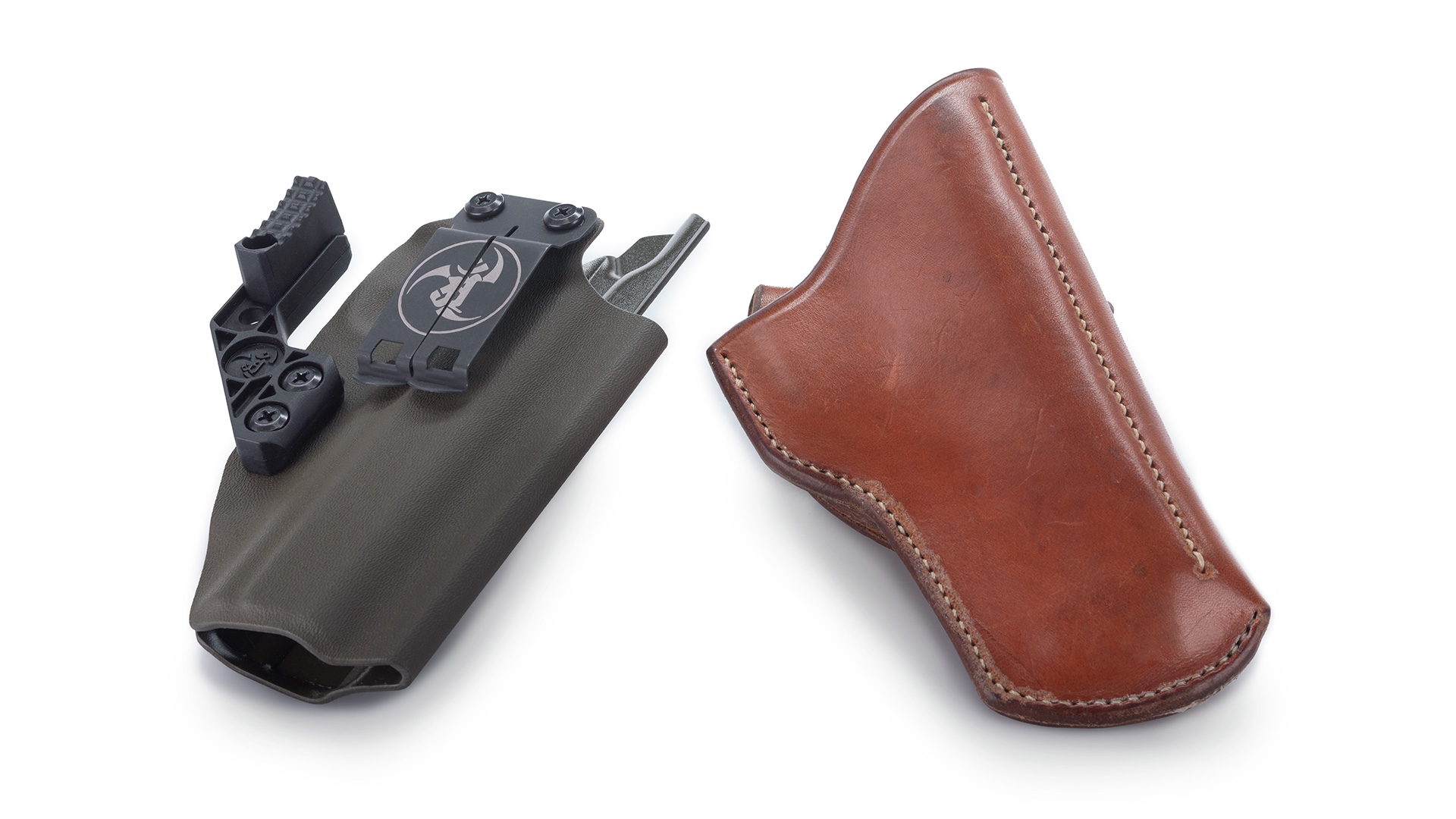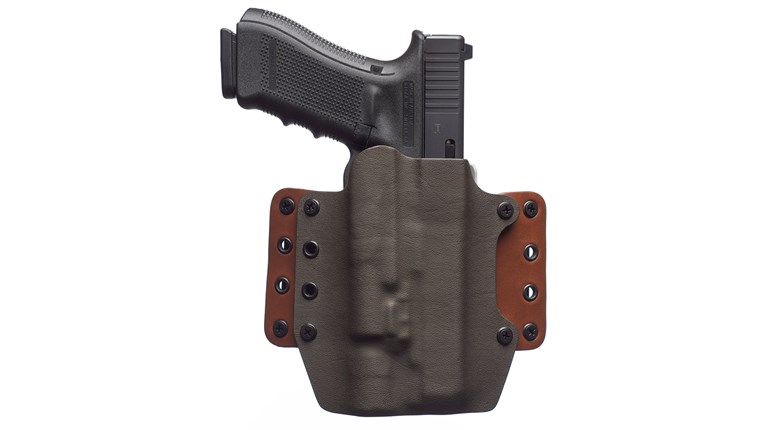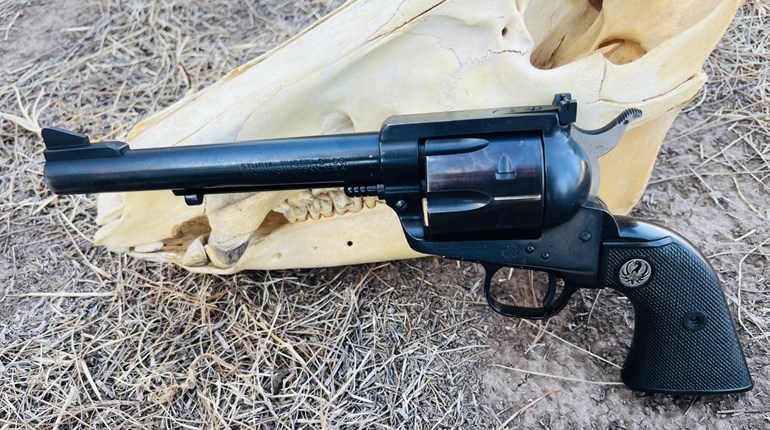
While a leather crossdraw holster and a Kydex appendix-carry holster may not appear similar, they share many traits that have been part of holster-making for generations, like custom-molding and front-body positioning.
Back in the late 1960s and early ’70s, the police department I worked for required us all to carry double-action revolvers. A lot of us were avid shooters and competed in local Police Pistol Competition (PPC) matches whenever we could. It was about that time that some officers began showing up at these matches with something they called a speedloader, a sort of round thing that charged all six loads into your gun at the same time. It was absolutely amazing, and we were all positive we had discovered something entirely new.
Of course, any handgun historian can tell you that’s not true. In fact, the first speedloader that worked was designed by William H. Bell in 1879. It was a round disk that would dump six cartridges into the cylinder when a portion of the disk was rotated and, of course, it only worked on top-break revolvers like the popular Smith & Wessons. Later, an Englishman designed a similar device for recharging top-break Webley revolvers. In the late 1960s, Pachmayr, Dade Machine Products and HKS began what we might call the modern era of the speedloader.
Another piece of American handgun history goes back to our frontier days. Despite movies, men seldom went around openly armed in frontier towns. In some cases, it was against the law, and in others it was just not accepted. This is where pocket carry really began.
Of course, you must understand that men’s clothing back then was quite different from what we see today. Men generally wore suits, and they were suits made of heavier material—often wool—that fit the wearer rather loosely. Pants were worn at the waist, not on the hips, and pants pockets were large and roomy. These old outfits could conceal a rather large revolver quite easily.
One of the more popular methods was to carry the handgun in a hip pocket. El Paso City Marshal Dallas Stoudenmire was reputed to have carried a pair of .44-caliber Smith & Wessons in the hip pockets of his suit pants. Stoudenmire, a deadly man with a sixgun, also had those pockets leather lined to facilitate his draw.
In fact, leather lining the pistol pocket became quite popular. My grandfather carried his short-barreled Colt—we now call it the Sheriff’s Model—in the same manner in the early 1900s. It wasn’t long before holster makers like S.D. Myres were making a hip-pocket holster that served the same purpose. And, of course, these leather craftsmen would also make a similar holster to fit a front pocket.
The origins of the shoulder holster are a bit harder to track down. We know that some Texas saddle and holster makers were making a shoulder rig in the 1870s. This looked very much like the same holster that would be worn on the hip, just hung on a leather shoulder harness, and it was probably pretty bulky. Eventually, somewhere between 1890 and 1900, shoulder rigs were made of thinner leather, trimmer design and utilized a metal spring to hold the handgun in place.
As you can imagine, shoulder holsters quickly gained popularity among some townsfolk. However, they were also the choice of cowboys and other men who made their living on horseback. The holster and gun were on the support-side of the body, while the horseman’s strong hand was handling the reins or a lariat and were thus out of the way. In addition, when covered with a coat, they were protected from the elements.
Texas outlaw John Wesley Hardin got out of prison in 1895 and soon ended up in El Paso. Hardin, by then, favored a pair of Colt 1876 double-action revolvers. One El Paso legend claims that he carried these in a double shoulder rig, while others assert it was a custom-made vest that incorporated holsters. To date, Hardin’s rig has not been discovered. Much later, although prior to 1920, Texas Ranger Frank Hamer was known to carry an extra gun in a shoulder holster. During a gunfight in Sweetwater, TX, Hamer pulled a .44 Smith & Wesson Triple Lock from a shoulder rig and killed his attacker.
So, it is interesting to research the history of our guns, gear and practices. I like looking at the book “Shooting,” by J.H. FitzGerald, printed in the late 1930s. There is a photo of him in a pretty solid Weaver Stance—that would be more than a few years before we
all credited the technique to Jack Weaver and Jeff Cooper. Just more proof that nothing is really new.





































